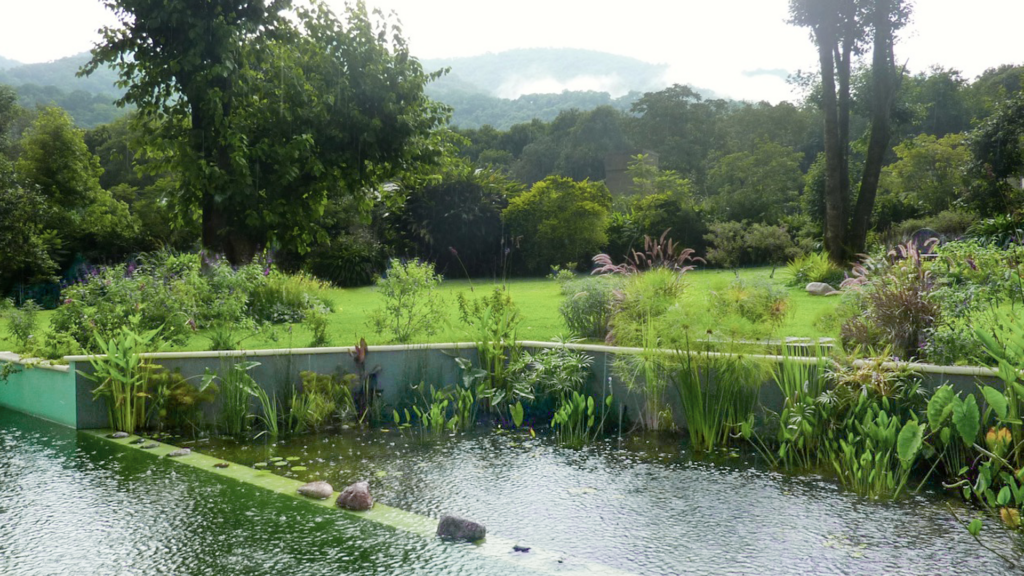Swimming is Better When Surrounded by Nature…
We carried out this lovely natural pool project in sub-tropical Argentina, within a cloud forest region located in the foothills of the Andes. Here is a brief description of the works and what we learned.
Water Circulation
Good design of water circulation is vital in all natural pools: water circulates via a standard swimming pool pump to a standard swimming pool dual sand filter, but then, in contrast to a chlorinated pool, it filters back into a regeneration area. The circulation model for this particular pool is somewhat different from most Northern European models, where most use surface skimmers to draw water through filters and back though the regeneration area into the pool (or a version of this). In tropical weather, it is much more important to take cool water from the bottom of the swimming area to keep the regeneration area and top of the swimming pool from reaching uncomfortable and unhealthy temperatures.
So, from the bottom of the swimming area, water is passed via pipes to the pump, which has a pre-filter for larger particles. Water then passes through the filter and then flows back into the regeneration area via perforated pipes below a gravel and geothermal fleece layer. The cooled clean water flows gently back over the separator wall into the main pool.
Below is a drawing showing the proposed swimming and regeneration areas:
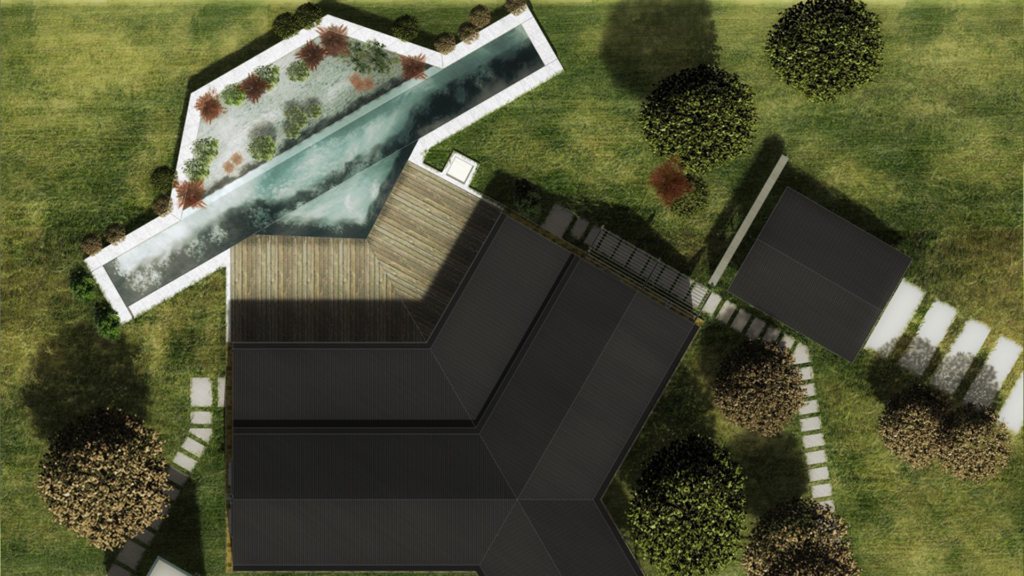
Vegetation
Choice of vegetatoin is critical. We used a mixture of marginal, floating and underwater plants, involving a majority of local subtropical water and swamp plants, some of which are used in European pools. Familiar natural pool plants include various Irises (local), Equisetum japonicum, Pontederia cordata (originated in Americas), and floating plants such as hardy Water Lilies (non native).
To stock the main marginal and oxygenating plants in the regeneration area we explored the extensive local rivers and lakes to find native plants and also had help from local garden centres and specialist aquariums.
To create a balanced ecosystem, vegetation around the pool is just as important as within the aquatic space:
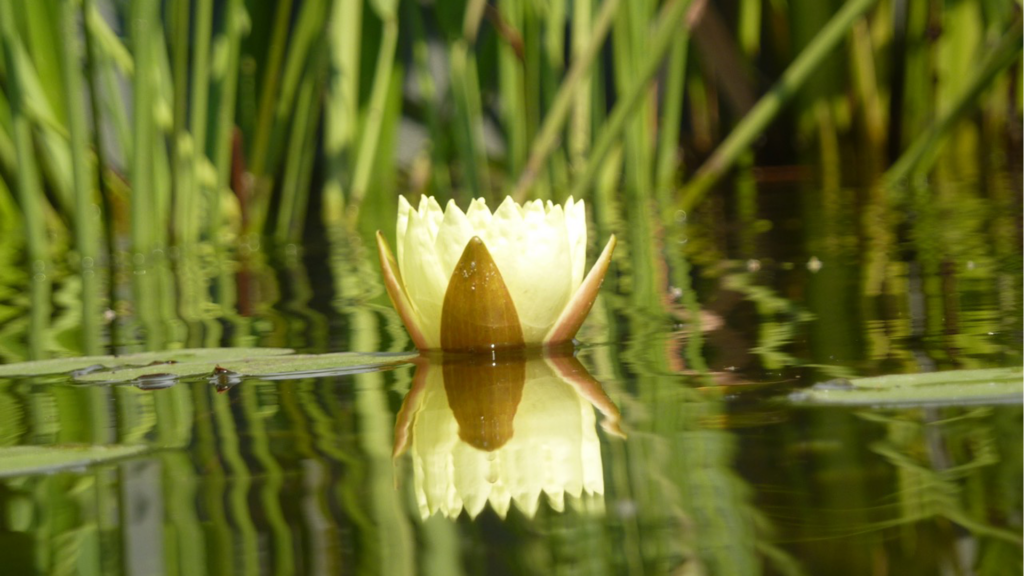
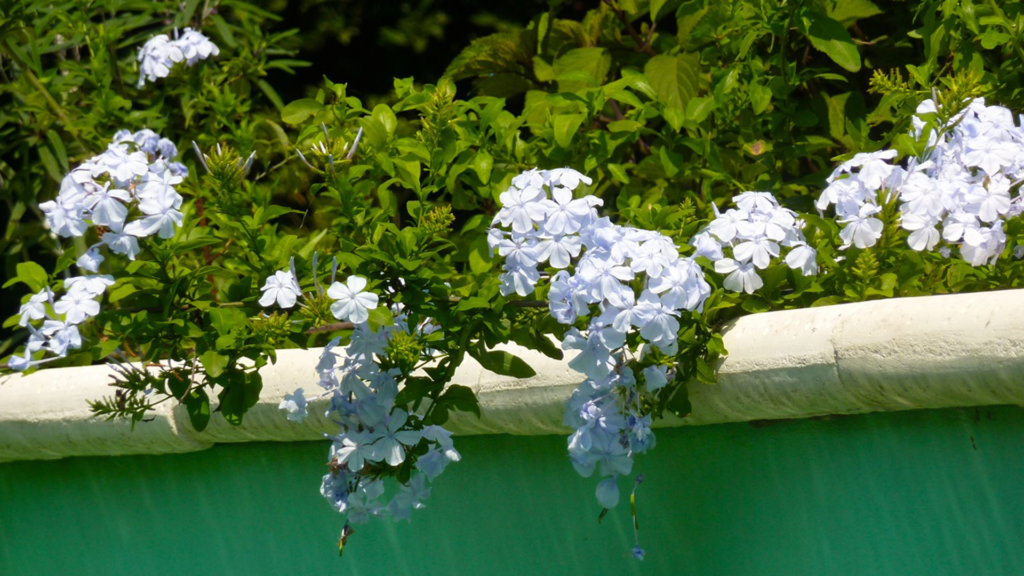
Wildlife
Within a month, the regeneration area was inhabited by countless tree frogs. Soon, a myriad of water beetles, water skaters, water scorpions, water spiders, and countless and very varied dragonflies arrived and set up home in the regeneration area. From the start we also attracted a multitude of birds, butterflies and bees, which come for nectar-bearing flowers in the regeneration area and pool surroundings.
This little wasp (with an even smaller friend next to it) is a good example of how a well planned natural pool can support the ecosystem:
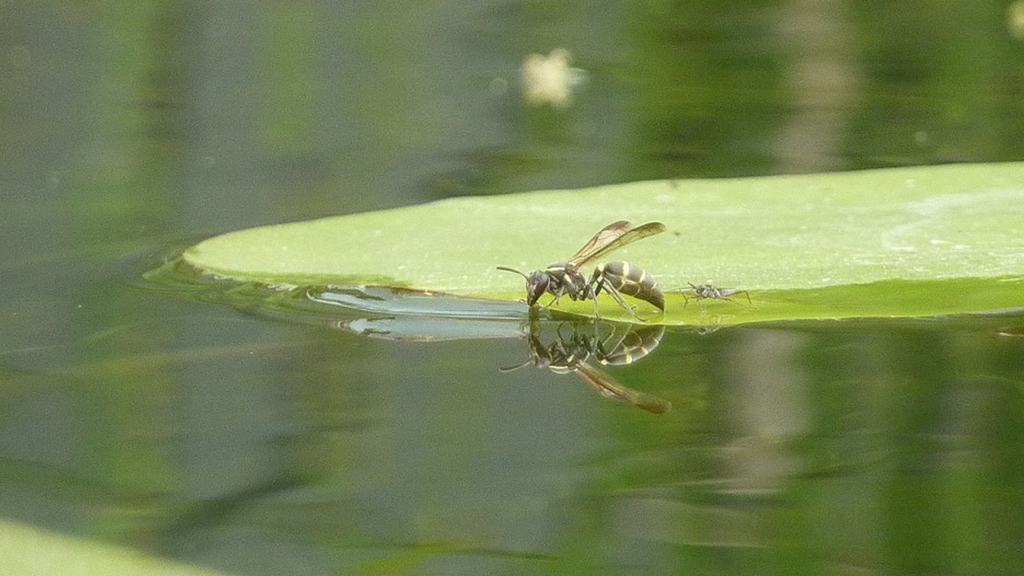
Commissioning and Maintenance
Maintenance of any natural pool is crucial, but it is even more so in a tropical and subtropical environment where temperatures are high and everything grows so fast.
That said, natural pool maintenance is perhaps less arduous than in a conventional chlorinated pool, at least in this region. In this subtropical environment, the temperatures and the ecology mean that people with chlorinated pools need to use enormous quantities of chlorine, acid, and algaecide, simply to maintain clear water and need to start from scratch every time it rains.
The natural swimming pool is different altogether to a chlorinated pool. You can enjoy it all year round and even on a rainy day like the one below:
